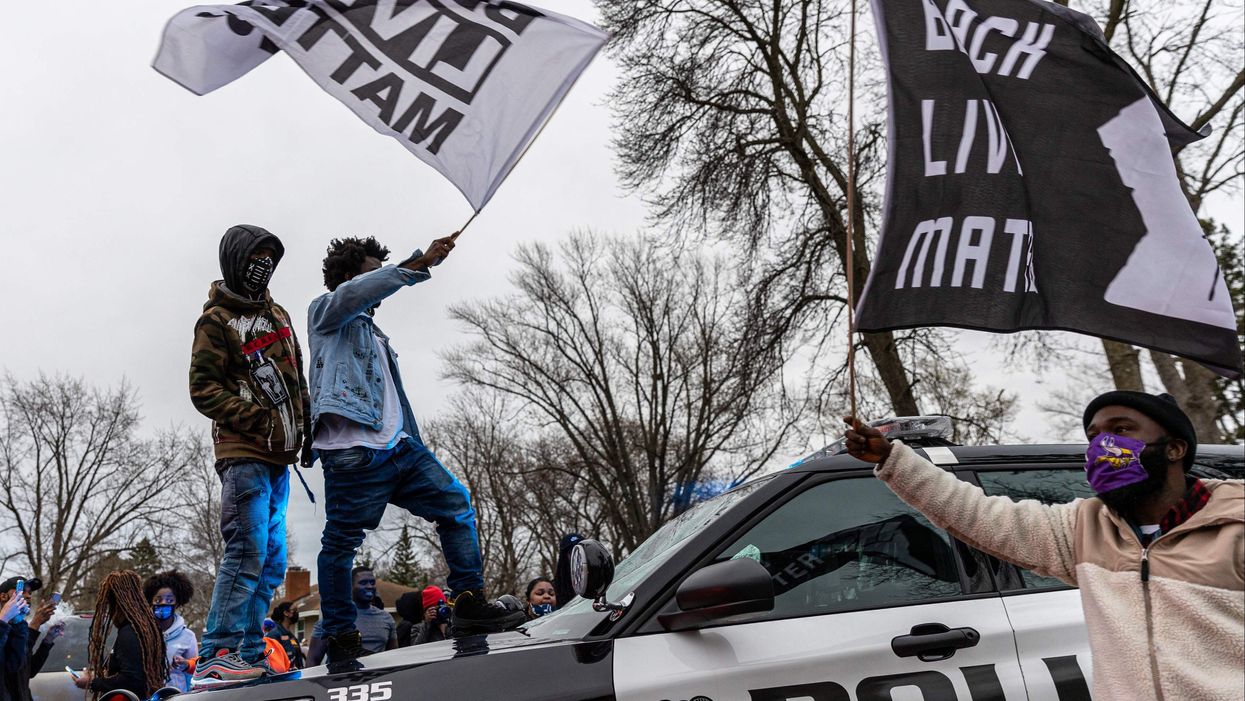News
Liam O'Dell
Apr 13, 2021
Protestors took to the streets for a second night on Monday, as they demonstrated against the killing of an unarmed Black man, 20-year-old Daunte Wright, by a Minnesota police officer on Sunday.
The force’s chief Tim Gannon said at a press conference that it was “an accidental discharge” and that the officer in question meant to use a Taser on Wright, rather than a handgun.
Meanwhile, President Joe Biden tweeted that he was thinking about Wright and his family.
“[I’m thinking about] the pain, anger, and trauma that Black America experiences every day. While we await a full investigation, we know what we need to do to move forward: rebuild trust and ensure accountability so no one is above the law,” he wrote.
The young adult’s death comes as conversations continue over the treatment of ethnic minorities by US police forces – with former police officer Derek Chauvin currently on trial over the killing of George Floyd in May last year.
Today I’m thinking about Daunte Wright and his family — and the pain, anger, and trauma that Black America experien… https://t.co/ZCyPBq9HmJ— President Biden (@President Biden) 1618268461
Both men were African-American, and killed in the US state of Minnesota.
As tensions between demonstrators and police escalate, data on how Black people are treated by American police forces paints a stark picture.
Almost a quarter of all fatal shootings by police since 2015 were of Black people
Since January 2015, The Washington Post has been collecting information on every person shot and killed by an on-duty police officer in the United States.
At present, more than 6,200 deaths of this nature are recorded on their database. Of these, 1,496 people were Black (24%).
This is despite Black people making up around 14% of the US population in 2019.
This very dataset, up to 2020, was also analysed by researchers in Philadelphia, who found that unarmed Black people are three times more likely to be fatally shot than white people.
Nearly 5 percent of all African Americans killed by US police officers between 2013 and 2019 were off-duty
It isn’t a case of an officer being on-duty, either, as this figure equates to 96 deaths out of 1,944 killings.
This figure is almost 3 percent higher than that of white people, for which 79 killings were made by off-duty police officers in the same period.
Black people on the road are more likely to be stopped by the police than white people
Researchers at Stanford University examined almost 100 million traffic stops and found that the annual stop rate for Black drivers was 0.10, compared to 0.07 for white drivers.
“We found that black drivers were less likely to be stopped after sunset, when a ‘veil of darkness’ masks one’s race, suggesting bias in stop decisions … Our results indicate that police stop and search decisions suffer from persistent racial bias and point to the value of policy interventions to mitigate these disparities,” their paper reads.
Black people have a higher imprisonment rate than both white people and Hispanic-Americans
Data from the Bureau of Justice Statistics, which sits within the US Department of Justice, in 2019 found that the rate of imprisonment for Black Americans is almost 1,100 people per 100,000 prisoners.
This is in contrast to Hispanic-Americans, who have an imprisonment rate of 525 people per 100,000 residents, and 214 white people per 100,000 residents.
Black people have a higher arrest rate for marijuana than white people, despite marijuana usage being “roughly equal” among the two groups
A 2013 report from the American Civil Liberties Union (ACLU) revealed that while the arrest rate for white people for marijuana offences “remained constant” at around 192 people per 100,000 from 2001 to 2010, the arrest rate for Black people rose from 537 to 716 per 100,000 in the same period.
This is despite 14 percent and 12 percent of Black and white people, respectively, reporting in 2010 that they took marijuana in the last year.
In Minnesota, where the killings of George Floyd and Daunte Wright took place, the Black/White arrest ratio was 2.4 in 2001. This increased by 231 percent at the end of the decade to 7.8 in 2010.
Top 100
The Conversation (0)














